How good it will be when the fish started cleaning their place by themselves. Yes, algae sometimes gives an unclean look to our fish tank. What Fish Eat Algae? Do fish feed algae or not? The answer is- “Yes, they do”, not every fish eats algae but there are some fish that enjoy eating algae.
However, it does not mean they will slowly clean up the whole tank, but they can reduce it to a limit. Can we keep algae eaters with other species in my fish tank? Does algae-eating fish are herbivores? Do they only depend on algae for their food?
We know you have more questions that are still unanswered!!
In this world of sharing knowledge, we are here with all of our research and through this valuable content, we serve you what’s best for your fish tank.
Do algae good or bad for my fish tank?
Yes, it is beneficial for the fish tank, if the quantity is small. There are many benefits of algae, as it filters harmful chemical substances from water and keeps the nitrogen cycle maintained, and also provides oxygen. It also gives a natural look to the aquarium.
It is also bad to some extent because once it gets more in quantity it makes really it very hard to get rid of. They get multiplies very fast and it also blocks lights from reaching other aquatic plants which later results in death. Excess algae are also harmful to our colorful companions.
How to get rid of algae?
We have to follow a certain parameter to control the excess growth of the algae plants. The ways to get rid of algae are as follows:- We can grow more aquatic plants that will create competition between more growth for nutrition and that will reduce the algae growth.
- Lower the intensity of light will reduce the photoperiod and hence it minimizes the growth.
- Do not overfeed because that creates nutritive waste and leads to the growth of algae.
- Do regular maintenance like changing the water and cleaning the substrate. Also, improve the filtration system or clean it on time.
If there is already an excessive amount of algae in your tank then you can use the artificial algae remover which is available in your near store at very affordable prices.

What are the types of algae found in aquariums?
In a fish store, you have probably seen many types of algae related to the landscaping inside a fish tank respectively. If you want to add an algae eater to your tank, then it’s going to depend on the type of algae in that fish tank. The types of algae are as follows:
1. Blue-green algae
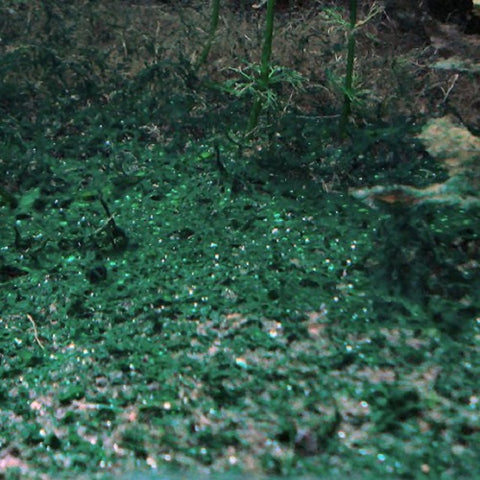
These algae are also known as cyanobacteria, it grows well in place that has high nutritious level with low nitrites compounds, such as substrate where the waste residue is present and filters in the fish tank. In some cases gives a reddish appearance, and has very rapid growth characteristics.
2. Green algae
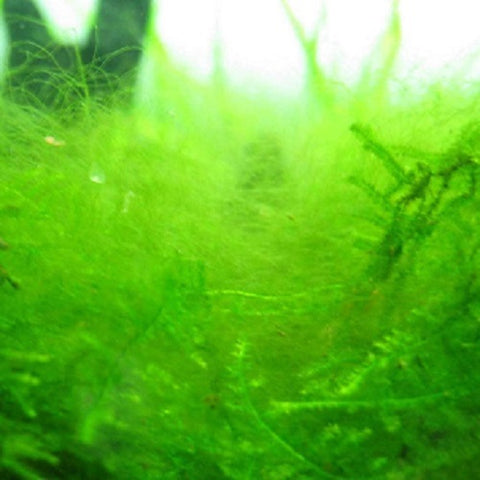
Green algae are very common blossoms in a tank if the lighting will be long and bright or the cycle of the fish tank breaks.
3. Green-spot algae

These are also similar to the green algae but it is very hard to remove and their favorable condition is low CO₂ and phosphate level. The name spot is given due to its characteristics, it grows like spots on the glass of a fish tank.
4. Green-hair algae
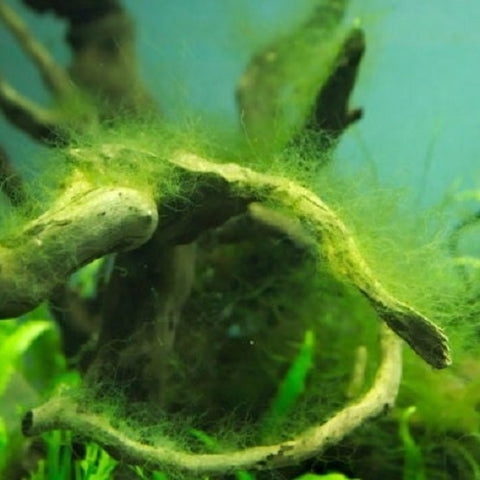
The name itself shows that it’s a hair-like structure and can grow more than one inch. The favorable conditions are the same as the green spot algae. It grows very rapidly in a wispy filament throughout the surface of the tank.
5. Brown algae
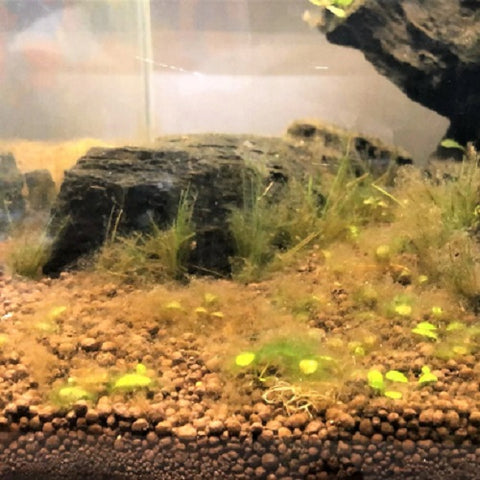
These brown-colored algae generally grow up in a new tank, if there is low lightning and an unbalanced routine of cleaning. If the water is having a moderate level of nitrates and phosphates, then it can grow at any substrates present in the tank even including the glass wall.
6. Brush algae
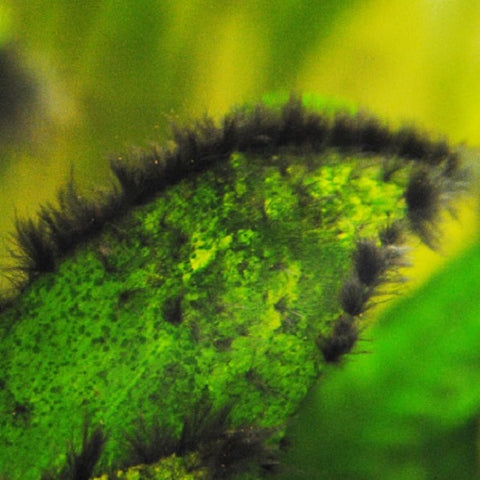
These are not common but are generally found inside the filters and on the slow-growing plant. A low level of carbon dioxide inside the tank is most favorable for these types of algae.
These are the fish tank algae generally found in their suitable conditions. If the water circulation is poor then we can notice that black-colored algae started to grow on the bottom surfaces.
In some cases, we notice that fish tank water is slowly turning out green color. This indicates that due to overfeeding the level of ammonia in the fish tank increases which seemss like green algae water.
How to choose the best algae eater for your aquarium?
Please do not hurry to select the algae eater fish. It is not simply that you select the algae eater according to the algae present in the fish tank, it should be also decided on various factors as follows:
- We have to select that algae eater that matches the oxygen, temperature, and pH levels of the tank.
- Tank size matters to the algae eater, the one of smaller size can live in 10 gallons but another hand the bigger size can be up to 12-15 cm which needs at least double of the first one i.e. 20 gallons in the tank.
- The speed of the current in water is not the same for every algae eater, some of them are adapted to fast and for others, it can be stressful.
- The companion or mates we choose matter because they can be aggressive or their behavioral changes cause stress to them.
You can do your own research by consulting in a fish store, or by stalking their behavior, but usually, personalities of the different living habitats of aquatic organisms start being aggressive to each other.
What are the best algae eater?
Algae eaters are also known as the natural clean-up machine of the tank. Apart from fish, aquarists also add other organisms like snails and shrimps to their tanks because they are also feeder’s algae. Goldfish also feed on algae sometimes, however, it is omnivorous with no stomach.
Fish that eat algae
1. Plecostomus
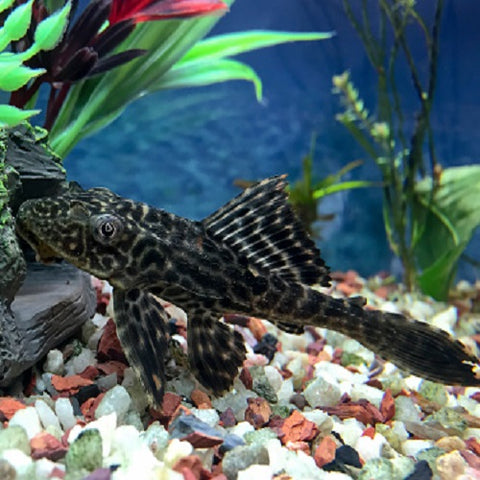
They have a great ability to clean algae. They sometimes also feed on fish that are smaller than their size.
They need 20-25 gallons of water and are not aggressive fish.
They can be comfortable at 68° F temperature with a pH level of 6.5 to 7.5. And are commonly found in a blackish speckled pattern on their body. Their mouth is similar to suckermouth catfish.
2. Otocinclus Catfish
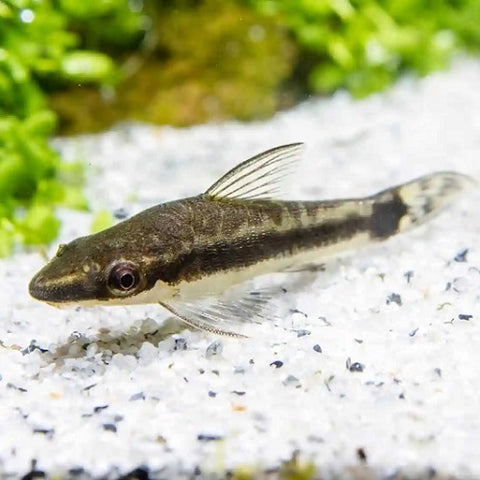
They are also superior in cleaning algae. They are very small in size and always like to feed in groups.
They look very similar to the Chinese algae eater and need at least 30 gallons of water. They are not aggressive behavior and are very easy to care for.
3. Siamese algae eater
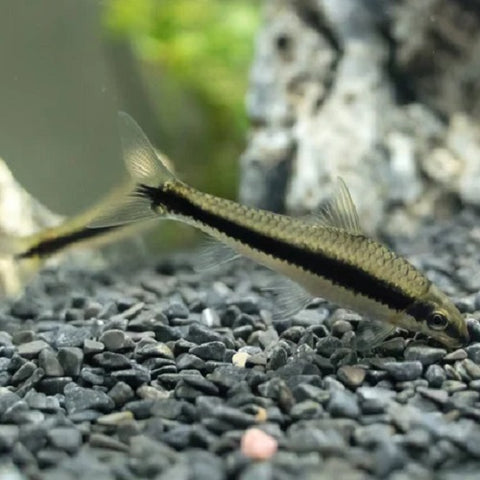
This is very popular among all the algae eaters. They know by their destructive habits.
They can live in a rigid environment, so beginner aquarists usually select these species. A beginner usually doesn’t care much, although they need 75-79°F temperature and pH level of 6.5 to 7.0.
They have greyish body skin color and long black stripes on their body and mature one can be up to 6 inches, so due to their size, it needs 24-30 gallons of water.
4. Mollies
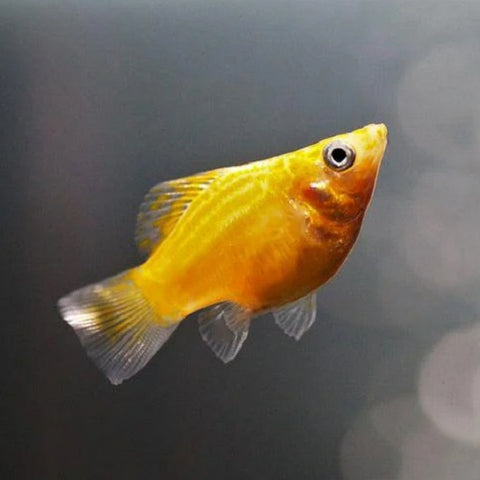
Due to their flat jaws, they are eating many algae as these fish which are above mentioned.
They are beautiful species and have different color body patterns and have bottomless stomachs with grasping jaws. They can be in different body shapes with slightly different fins.
These fish are capable of reproducing faster than other algae eaters do. They are small in size, mostly 3-5 inches but they love to survive in salty water. The pH should be 7.5 to 8.
5. Whiptail Catfish
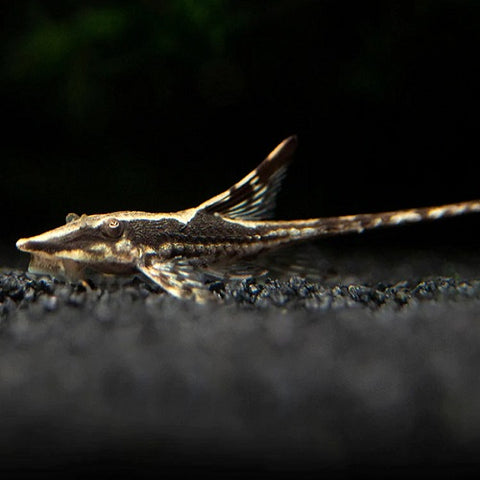
They are known for their amazing body structure and give a feeling of having a unique fish in the tank.
It is mostly noticed that they can eat anything that comes to their mouth. They are also known for their hunger and can eat anything in the fish tank.
They need 50 gallons of water for proper space and a pH range of 6.5 to 7.0 with 73°F and 79°F temperatures.
These are basically famous and very acceptable. However, there are many more algae eaters which can be kept in fish tanks.
Conclusion- What fish eat algae
We have shared interesting and friendly facts to enjoy! Hope our article regarding “What Fish Eat Algae?” provided you with which is best for your aquarium.
If you have any unanswered questions or want suggestions for the products for your aquarium then please leave your message in the comment section.


Comments (0)
Back to Beginner Guide & Advice